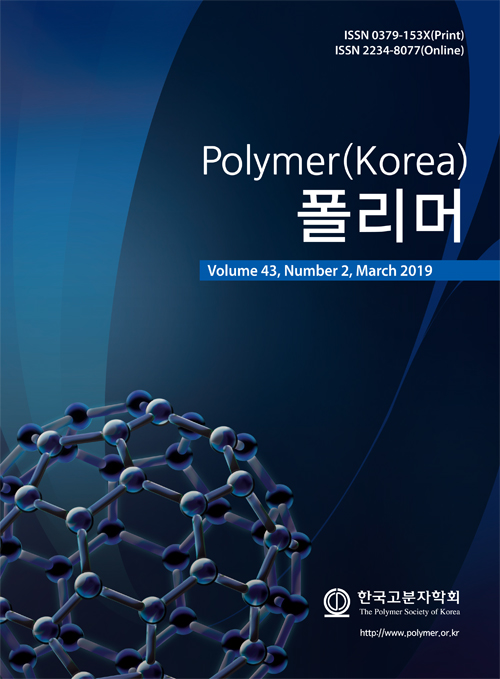- Fluidity, Physical Properties and Electrical Conductivity of PC/Graphite Intercalated Compound Composite for a Bipolar Plate in the Polymer Electrolyte Membrane Fuel Cell
Division of Advanced Materials Science and Engineering, College of Engineering, Kongju National University, Cheonan, Chungnam 331717, Korea
- 연료전지 양극판용 PC/흑연 삽입 화합물 복합재료의 유동성, 물리적 성질 및 전기전도도에 관한 연구
공주대학교 신소재공학부
The fluidity, physical properties and electrical conductivity of polycarbonate (PC)/ graphite intercalated compound composites were investigated for the application of bipolar plate of electrolyte fuel cells. The intrinsic difference of this study from the previous studies on the polymer/expanded graphite is that the graphite intercalated compound (GIC) with bisulfate was used instead of expanded graphite. GIC was compounded with the PC in the twin screw extruder and injection molded. During the compounding and molding procedure, GIC was expanded and transformed to expanded graphite. The advantage of the polymer/GIC compared to conventional polymer/expanded graphite lies in its higher fluidity. As a precursor of expanded graphite, GIC is finally converted to expanded graphite during extrusion and injection molding. During the filling stage of injection molding process, the PC/GIC was pushed into the mold cavity by the thermal expansion of GIC, resulting in higher fluidity.
고분자 전해질 연료전지의 양극판에 적용될 폴리카보네이트(polycarbonate, PC)/흑연 삽입 화합물 복합재료의 유동성, 물성 및 전기전도도에 관하여 연구하였다. 기존 연구와의 차이점은 팽창된 흑연을 사용하는 대신 bisulfate가 삽입된 흑연 삽입 화합물(graphite intercalated compound, GIC)을 고분자와 압출기에서 혼합하면서 동시에 GIC를 열 팽창시켜 복합재료를 제조한 점이다. 기존의 고분자/팽창 흑연과 비교하여 이 연구에서 처음으로 시도한 고분자/GIC의 장점은 유동성에 있다. GIC가 사출과정에서 팽창에 의해 금형에 밀려들어가는 형태의 유동 패턴을 보이고 이로 인해 더 높은 유동성을 보이는 것으로 관찰되었다.
Keywords: bipolar plate, graphite intercalated compound, expandable graphite, polycarbonate, injection molding
- Polymer(Korea) 폴리머
- Frequency : Bimonthly(odd)
ISSN 0379-153X(Print)
ISSN 2234-8077(Online)
Abbr. Polym. Korea - 2023 Impact Factor : 0.4
- Indexed in SCIE
 This Article
This Article
-
2019; 43(2): 188-195
Published online Mar 25, 2019
- 10.7317/pk.2019.43.2.188
- Received on Aug 23, 2018
- Revised on Nov 30, 2018
- Accepted on Nov 30, 2018
 Correspondence to
Correspondence to
- Younggon Son
-
Division of Advanced Materials Science and Engineering, College of Engineering, Kongju National University, Cheonan, Chungnam 331717, Korea
- E-mail: sonyg@kongju.ac.kr










 Copyright(c) The Polymer Society of Korea. All right reserved.
Copyright(c) The Polymer Society of Korea. All right reserved.